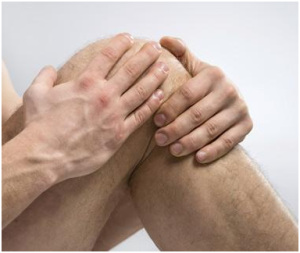By Linda Melone for Next Avenue
Whether you took a longer walk than usual, tried a new exercise or simply spent all day on your feet, achy legs can make your whole body hurt. If the achiness stems from exercise, blame it on micro-tears in the muscle cells themselves, says Irv Rubenstein, an exercise physiologist and founder of S.T.E.P.S., in Nashville, Tenn. The little tears spark an inflammatory process that’s necessary for healing. “It occurs and enables proper reconstruction of the damaged tissue,” Rubenstein says.
Another cause of achy legs and knees is the normal aging process. We experience changes in connective tissue (cartilage), which can cause tightness, according to John Fenger, manager of outpatient rehabilitation at Orange Coast Memorial Medical Center in Fountain Valley, Calif. However, if your legs cramp up when you’re walking down the street for no obvious reason, it’s time to schedule a doctor’s appointment, Fenger says. “The pain may be due to an occlusion (blockage) or it may be neurological,” he notes.
For normal aches and tightness, simple stretches and specific exercises can help you ease back to your normal routine sooner.
Here are four ways you can help ease leg aches and pains:
- Try hair of the dog. Perform a lower intensity, lower volume (reps, sets) version of the activity that made you sore, suggests Rubenstein. If you usually walk vigorously, slow down your pace and cut down the distance. If your soreness is due to lifting weights, cut the weight or do the move without weight and go with fewer sets and repetitions.
In addition, extend your warm-up, suggests Rubenstein, since muscles are not just sore but stiff.
“This way, you can be sure you’re pushing blood (and its accompaniment, oxygen) into muscles to speed healing,” he says, while helping the lymphatic system remove the “damaged” tissue and toxins.
- Break up your workouts throughout the day. To strengthen legs and ease knee pain, try intermittent squats. “Recent studies show that performing squats may be beneficial to knees when done in small increments during the day, but not when sets are done one after the other,” says Fenger.
For example, instead of performing a set of 15 reps followed by a second set, do one set and then another four hours later and so on during the day to stave off pain without wearing down the knee joint.
Sequential sets may lead to the breakdown of the integrity of the knee cartilage. “Each set causes further breakdown,” explains Fenger. “But this does not happen if you allow a rest period in between.”
- Do tai chi or yoga. A number of studies show the benefits of tai chi on pain relief, including when the pain stems from fibromyalgia, osteoarthritis and low back pain.
“This gentle martial art includes many movement patterns and benefits people with leg pain and fatigue,” says Fenger, who also recommends modified and gentle styles of yoga. Qualified tai chi instructors may be found online at AmericanTaiChi.net, or check Amazon for DVDs for guidance. (Always tell your tai chi or yoga instructor if you are in pain, and ask for modified moves if necessary.)
- Stretch. Stretches allow for better post-exercise mobility and ease of getting around. “And they may help you feel better,” Rubenstein says. Stretches for specific, common achy muscles include:
Calf stretch:
- Stand behind a chair and hold your hands on the back for balance.
- Stand on your toes and hold the position for a few seconds then lower your heels back to the ground. Repeat several times. Avoid overstretching.
Quadriceps stretch (front of thighs):
- Stand on one leg and raise the other leg off the floor, bending at the knee.
- Gently pull your foot with the opposite hand and bring your foot close to your buttock.
- Hold onto a wall or a chair for balance. Hold 20 to 30 seconds and repeat with the other leg.
Hamstring stretch (backs of thighs):
- Sit on the ground and bend one leg, resting the foot of the bent leg on the inside of the opposite outstretched one.
- Bend at the waist and stretch forward, reaching the toes on the outstretched leg. Hold for 20 to 30 seconds and repeat on the other leg. Move slowly and gently; avoid bouncing.
Hip flexors (front of thighs, often responsible for low back tightness):
- Stand facing a bench approximately a leg’s length away; place right foot on the bench.
- Slowly lunge forward by bending the right leg to a lunge position, keep hands on hips and chest high while maintaining a straight left leg with heel on the ground. As you lean forward into the stretch you should feel a slight pull in your left hip flexor (just below the hip bone). Hold 20 to 30 seconds and switch legs.
Back pain stretch (this extended stretch takes gravity out of play, allowing back muscles to relax):
- Lie on your back, legs up and over a chair with knees bent at 90 degrees with arms straight out from the shoulders with palms up; relax and feel the body and low back settle into floor (do not force). Hold five minutes.
Copyright© 2014 Next Avenue, a division of Twin Cities Public Television, Inc.







Leave a Reply